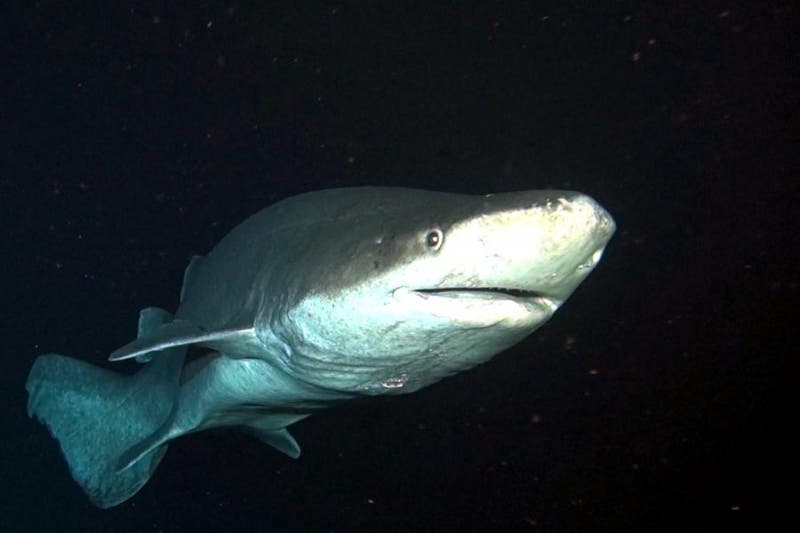Researchers at University of Hawaii, Manoa in collaboration with a team from the University of Tokyo were surprised to find not one, but two species of deep-water sharks that have positive buoyancy. Most sharks have a negative buoyancy, meaning if they stop swimming they’ll sink to the bottom, and some researchers have posited that there may be some species with neutral buoyancy. Finding sharks that defy this conventional wisdom is definitely an important discovery. Now the researchers are trying to find out how the positive buoyancy is attained and whether other shark species have this ability.
Floating sharks

The prickly shark, Echinorhinus cookei, is a large predatory shark with a pan-Pacific distribution. Prickly sharks are amazing looking and have a traditional shark body type although they are a bit thicker around the middle than many other species. Photo: Wikipedia
Sharks’ cartilaginous skeletons are less dense than bones, and most employ an oil-filled liver to increase buoyancy. Despite this, sharks can’t float and have to start swimming at some point to avoid sinking to the bottom of the ocean. Some scientists have considered that maybe some species are neutral buoyant based on observations of some species which live in austere environments (low oxygen, few food resources). You can imagine how remarkable it was for the Hawaiian researchers to discover that the sixgill and prickly sharks have slightly positive buoyancy which helps them slowly rise to the surface without any effort.
The team strapped cameras, lights and sensors to the several specimens from each species. Each 30 seconds, a strobe would turn on and light the shark’s surroundings, while a camera instantly took a picture. Meanwhile, sensors recorded the temperature and depth of the water. To record when the shark began to swim and measure the effort that went into the process, an accelerometer was also added. After a predefined time, the whole pack detached from the shark and rose to the surface from which it was collected by the researchers.
The researchers were so surprised by the results that they had to recheck their equipment and start fresh with a new set of experiments. But the results stayed consistent: the sixgill and prickly sharks can float. . “It was not at all what we expected to find,” said study co-author Carl Meyer, an assistant researcher at the University of Hawaii at Manoa’s Hawaii Institute of Marine Biology. “Conventional wisdom suggests sharks are generally negatively buoyant — they’ll sink if they stop swimming.”
“When I first downloaded the camera, I thought it had failed because all I saw were thousands of completely black frames. Suddenly a string of images appeared with a brightly-lit, alien-looking reef and strange deep-sea invertebrates. I was elated and realized that the black frames resulted from the shark swimming around too high in the water column for the camera strobe to illuminate the seabed.”
Data from the accelerometer clearly showed that when sharks swam, the muscles and tail worked harder at any given speed when the individuals were going up. “When they were going uphill, they could glide for minutes at a time without beating their tails,” Meyer added.
It’s not clear how this trait appeared, however. Deep-water sharks spend their day time at lower depths (~600 meters), and start swimming towards the surface from sunset to a higher depth (~300 meters). The buoyancy could be a physiological trait which allows the sharks to explore the cold, deep habitats. It may also be result of some evolutionary mechanism that allows the sharks to sneak up on prey or conserve energy. There’s still much to learn, that’s for sure.
“Finding positive buoyancy in [deep-sea] sharks is demonstrative that we have a lot to learn about deep-sea animals and how they survive,” Meyer said.
Findings were documented in the journal PLOS ONE.








